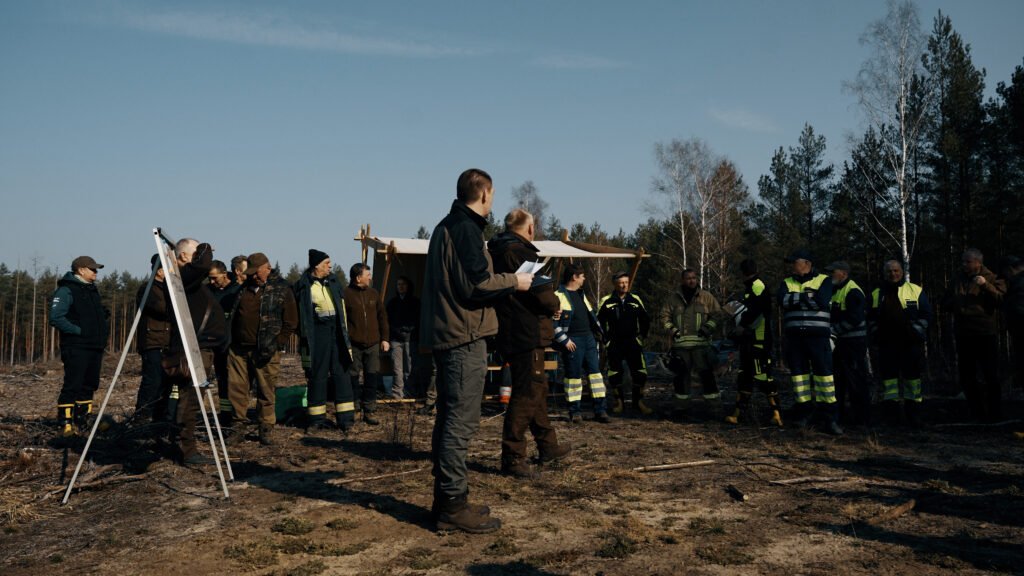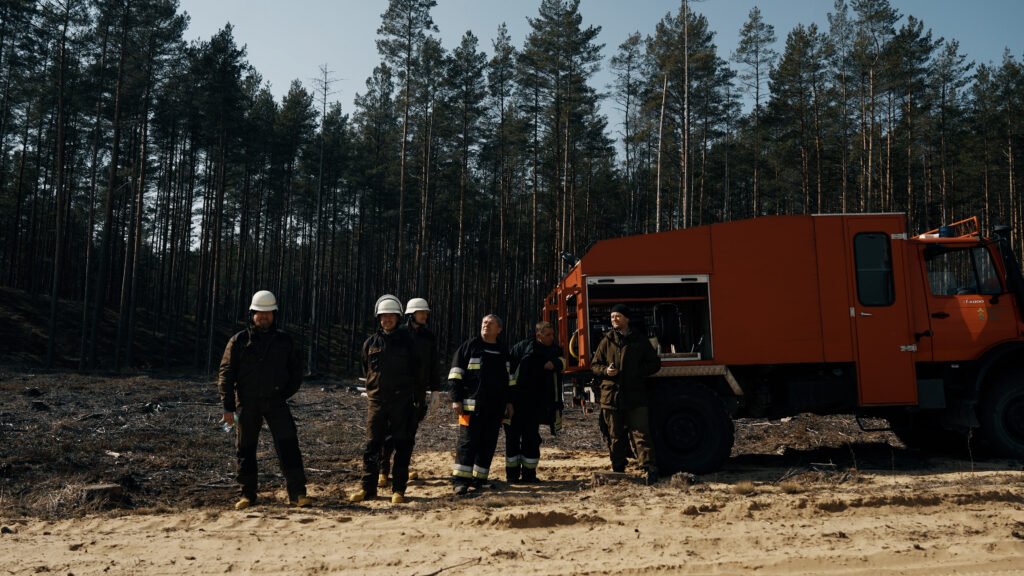
Photo: Kostas Kajėnas
On March 21-31, the Dzūkija National Park (DNP) successfully implemented a controlled burning of the forest floor nature management measure for the restoration of continental dunes. On March 21, the works were implemented in the Musteika dunes, on March 28 in Marcinkonys, and on March 31 in Lynežeris dunes.
“The planned works were implemented smoothly. We thank the scientists of the Vytautas Magnus University Academy of Agriculture, the specialists of the State Forest Enterprise, the staff of the Dzūkija National Park, colleagues from other protected area directorates and firefighting teams for their cooperation and assistance in carrying out the controlled burning of the forest floor,” said Vaidas Vyšniauskas, DNP Chief Specialist.
The restoration of the Dzūkija continental dunes is a pre-planned nature management measure that was included in the DNP planning scheme and management plan approved by the Government in 2016. Its implementation has been supported by the LIFE integrated project “Optimization of Natura 2000 network management in Lithuania” since 2018. The continental dunes were opened in January 2023, and their restoration work is currently ongoing. One of the measures used for this is controlled burning of the forest floor.





Photo: Kostas Kajėnas
Controlled burning is essential for the survival of species
Fire in nature is a natural ecological factor under the influence of which species and habitats have evolved. In the past, fires in forest habitats were a natural or human-caused, fairly regular natural phenomenon. Lichen pine forests and Western taiga habitats and certain plant, mushroom, insect and bird species associated with them have adapted to periodic fires, and therefore fire damage has become necessary for their survival.
After the state began to actively engage in forest management and fire prevention, some habitats and species were in danger of extinction. Therefore, controlled burning is necessary to maintain them as an imitation of spontaneous fires.
Insect, bird and plant species that prefer them very quickly settle in former fire sites. Most of them are endangered and protected, listed in the annexes of the EU Birds and Habitats Directives and the Lithuanian Red Book.
Views and opinions expressed are however those of the author(s) only and do not necessarily reflect those of the European Union or CINEA. Neither the European Union nor the granting authority can be held responsible for them.
